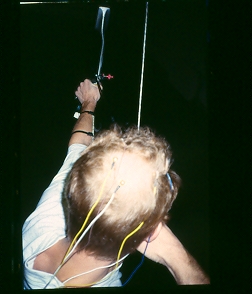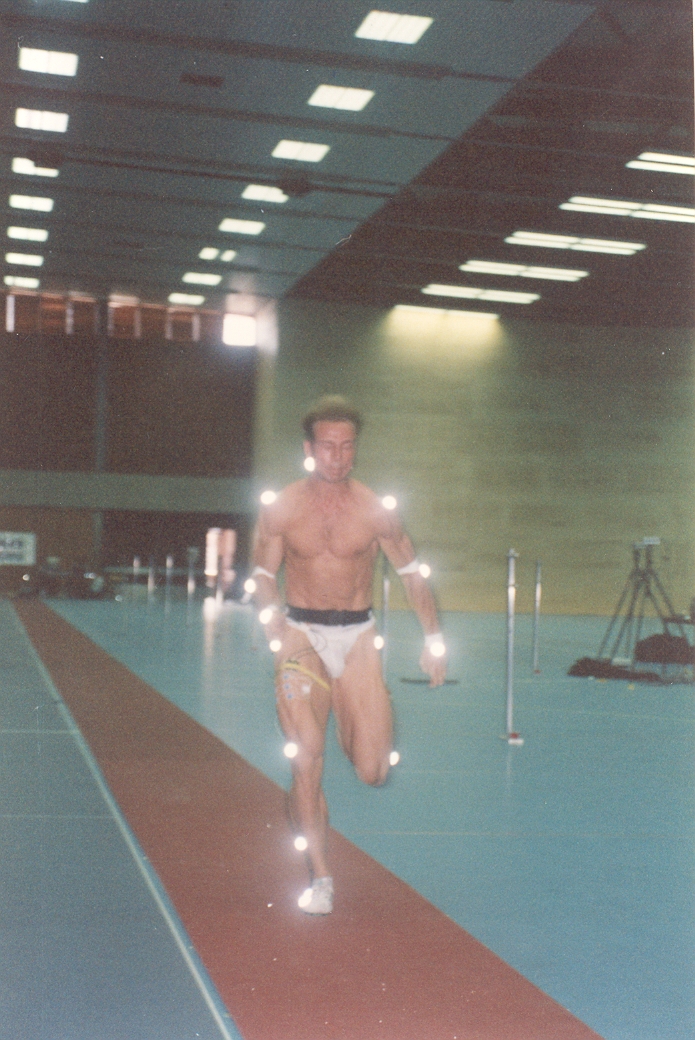The athlete’s body is a black box, thousands of chemical, electrical and mechanical processes are going on and we don’t have a clue what we are doing here. Yes, if you train, something changes, the body adapts. But what, where, when and why? No idea! Instead of endless tinkering and “trial-and-error”, in an early stage of my career as a coach I thought it more efficient and useful if I at least gave it a try to understand the most relevant on going processes. This way at least my stumbling in the dark got some direction.
The second idea was that most of training is the training of the brain and the nervous systems, not exclusively of course, but being more important than we always assumed.
At that time very little attention was given to this idea, even sports psychology was of little help here. And even today the brain is a strange organ to work with. The psychiatrist is probably the only medical professional not having a proper diagnosis of the organ he/she tries to change or improve before intervention takes place.
Of course, as a coach we often only look at observable or measurable behaviour of athletes, in training and in competition, that is: do athletes perform as we expect or as we want them to?
One of the first projects I started was to look at the brain, more specificly at brain laterality, the different functionings of the left and/or the right brain and the preferred use of one of these sides of the brain. In 1994 I was part of research group in Oslo Norway, doing biomechanical research on sprinters. With this group I performed a short EEG (brainwave) test: 2 minutes eyes open – 2 minutes eyes closed- 2 minutes eyes open. And also looked at handedness, footedness and the dominant eye of these athletes and a laterality questionnaire, consisting of 40 MC questions to establish brain dominance. Interesting!
I also bought my own portable EEG measurement equipment and I even was able to measure EEG, brain dominance 30 minutes for a World Championships final race in sprints.
Also I tested more static sports like archery (less movements artefacts and mainly a mental sport), golf and shooting.

I started to use EMG of electromyography to measure muscular activity during exercise and training. This is still the only practical and reliable way to see what, when and in what order muscle groups work during movement.

This separates facts from fiction, since many coaches make bold statements on how and which muscle works e.g. during sprints or during weight exercises e.g. recruitment of fast vs. slow muscle fibres. And Henk’s second rule applies: “the less knowledge somebody has about a subject, the bolder the statements about the subject are”.
I have heard and read the most ridiculous statements which display a lack of deep knowledge about these subjects. Like a mentor of mine used to say: “In god we trust, all others show data….”.
What surprises me is that over the past decades professional coaches and therapists are not using EEG or EMG measurements more or using these tools for intervention such as neurofeedback or EMG biofeedback. This to teach athletes awareness and self-regulation, which most professionals will agree, are important. And like a very smart person once stated: “what you cannot measure, you cannot improve”. I do not agree for the 100% with this statement since “trial-and-error” can go a long way sometimes. And collecting tons of data, which is easy these days, isn’t going to solve this problem if you do not know what is relevant and significant. And if you don’t know how the interpret the data and make the very important link with possible interventions, you’re stuck as well.
I am using psychophysiology and biofeedback since the end of the 1980’s but still very few of my colleagues are using EEG or EMG or biofeedback in general.
What could be the reason for that?
Some ideas on why this is:
– they are not familiar with psychophysiology or biofeedback
– these subjects demand a certain basic knowledge of physiology, anatomy and technology
– it can only be done with specific equipment
– it is always on an individual basis, so rather time-consuming if you coach large groups.
On the other hand: coaches should never be afraid to improve their knowledge and you don’t have to be a neurosurgeon to work with this equipment. For the price of a treadmill or exercise bicycle, you can have the Rolls-Royce of psychophysiology equipment. And the time-problem is a matter of planning and priorities and it is time well-spend.
Biofeedback and psychophysiology: just go out and have a look…..
Limited bibliography:
Buszaki, G: Rhythms of the Brain; Oxford University Press, 2006.
Basmajian, J.V. (Ed.) : Biofeedback. Principles and Practice for Clinicians; Williams & Wilkins, 1989.
Cram, J.R; Kasman, G.S: Introduction to Surface Electromyography; ASPEN Publication, 1998.
Wise, Anna: The High-Performance Mind; Tarcher/Putnam, 1997.
Davidson, R.J; Hugdahl, K.(Eds.): Brain Asymmetry; MIT Press, 1995.
Segalowitz, S.J: Two Sides of the Brain; Prentice-Hall, 1983.
Gschwind, N; Galaburda, A.M.(Eds.) : Cerebral Dominance; Harvard University Press, 1984.
Ornstein, R: The Right Mind. Harcourt Brace & Comp. 1997.
Springer, S.P; Deutsch, G: Left Brain, Right Brain; W.H.Freeman, 1989.
Sandweiss, J.H; Wolf, S.L.(Eds.): Biofeedback and Sports Science; Plenum Press , 1985.
Blumenstein, B; Bar-Eli, M; Tenenbaum, G: Eds.): Brain and Body in Sport and Exercise: Biofeedback Applications in Performance Enhancement; Wiley, 2002.
Strack, B.W; Linden, M.K; Wilson, V.(Eds.): Biofeedback and Neurofeedback Applications to Sportpsychology, AAPB, 2011.
Sologub, E.B: Elektroenzephalografie im Sport; J.A.Barth Verlag, Leipzig, 1976.
Mechau, D: EEG im Sports; Karl Hofmann Verlag, 2001.

